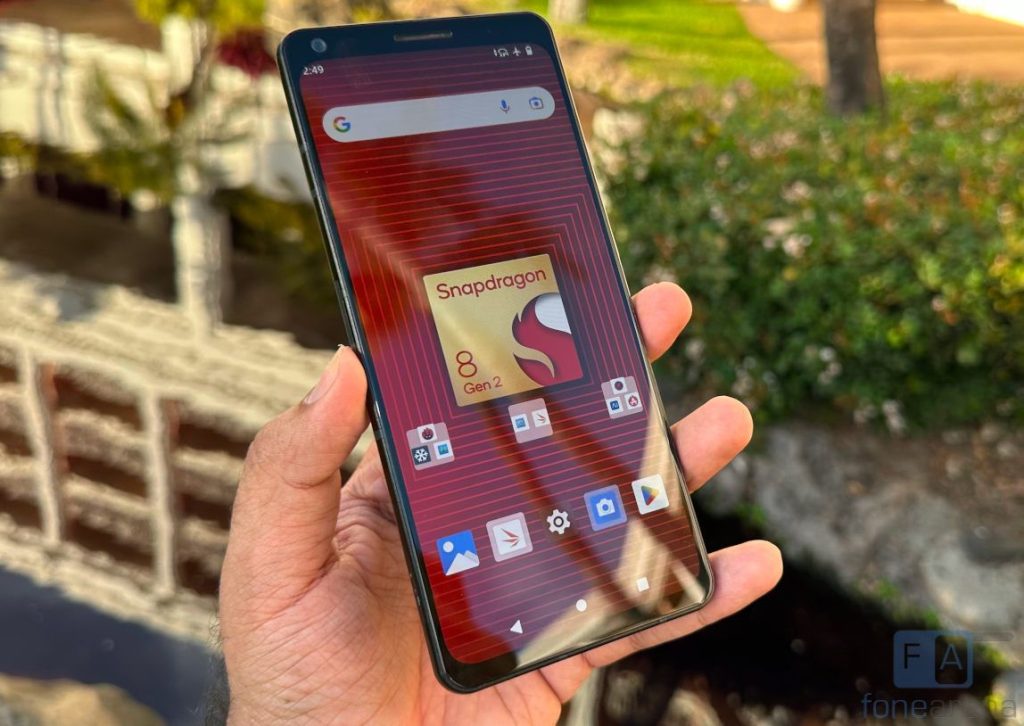
Qualcomm introduced its flagship Snapdragon 8 Gen 2 Mobile platform at its Snapdragon Tech Summit 2022 last month. The latest flagship SoC has a new 1 + 4 + 3 microarchitecture that uses 1 x Kryo Prime Arm Cortex-X3-based CPU at up to 3.2GHz, 4 x Kryo Performance CPUs that has 2 x A710-based and 2 x A715-based CPUs at up to 2.8GHz and 4x Kryo Efficiency A510-based CPUs at up to 2GHz.

It is fabricated using the TSMC 4nm Process Technology. We got to check out the smartphone at the event, and here are the official benchmark scores.
Compared to the predecessor, the new Kryo CPU based on latest ARM-V9 architecture promises 35% performance improvements and 40% improved power efficiency.

The new Adreno GPU that promises up to 25% faster performance, with up to 45% better power efficiency compared to the predecessor. It is also the first chip to support Vulkan 1.3 API and hardware-accelerated ray tracing in mobile games.
The Snapdragon 8 Gen 2 reference device has a FHD+ 144Hz screen, 12GB LPDDR5x and 256GB UFS 4.0 storage. Here is the benchmark comparison. The values are provided by Qualcomm, and the final scores are an average from three iterations.
AnTuTu Benchmark 9
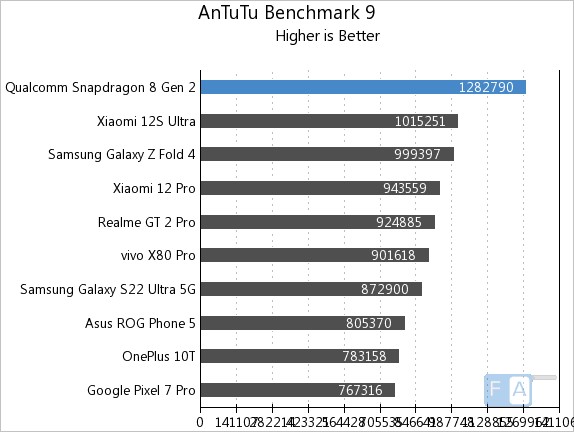
The Snapdragon 8 Gen 2 tops the AnTuTu 9 benchmark clocking, 1282790 or 1.28 million points. This beats the Xiaomi 12S Ultra’s score, according to our test earlier this year. The vivo X90 powered by Dimensity 9200 scores 1194521 points, according to official AnTuTu scores.
According to official MediaTeks’s Dimensity 9200 score is 1.26 million points, which still doesn’t beat the Snapdragon 8 Gen 2’s reference device. Lenovo China GM recently said that moto X40 powered by Snapdragon 8 Gen 2 has posted AnTuTu Benchmark score of 1.31 million.
Geekbench 5 Single-Core
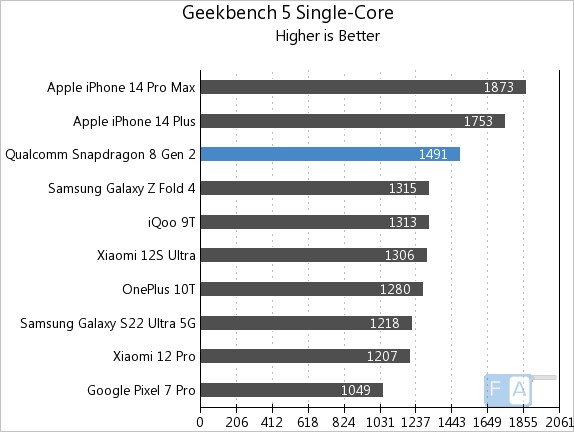
Score from the iPhone 14 Pro Max powered by Apple A16 Bionic and the iPhone 14 Plus powered by A15 Bionic are better than the Snapdragon 8 Gen 2 in the Geekbench 5 Single-Core CPU benchmark, but compared to older Android phones, this is better.
Geekbench 5 Multi-Core
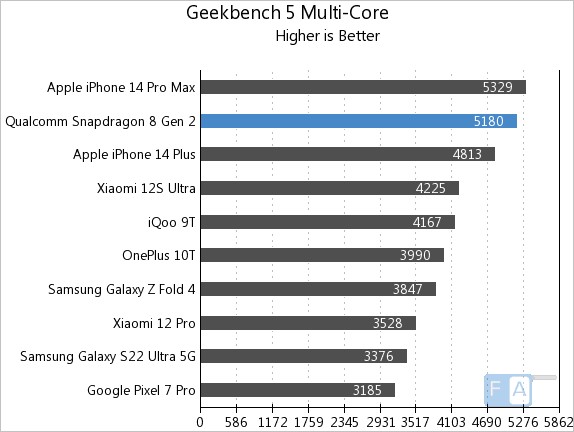
The latest iPhone 14 Pro Max tops the Geekbench 5 Multi-Core CPU benchmark chart, but the Snapdragon 8 Gen 2 is just behind, closing the gap. However, it is better than the iPhone 14 Plus, powered by last year’s A15 Bionic chip. The flagship Snapdragon chip is way ahead of older Snapdragon 8 Gen 1 and 8+ Gen 1 chips.
According to Xiaomi’s teaser, the Xiaomi 13 powered by Snapdragon 8 Gen 2 with LPDDR5X 8533Mbps RAM and UFS 4.0 storage scored 5289 points on Geekbench Multi-Core benchmark, which is better than the Snapdragon 8 Gen 2 reference device that we have. This is 37% better compared to Apple A16 Bionic, says the company.
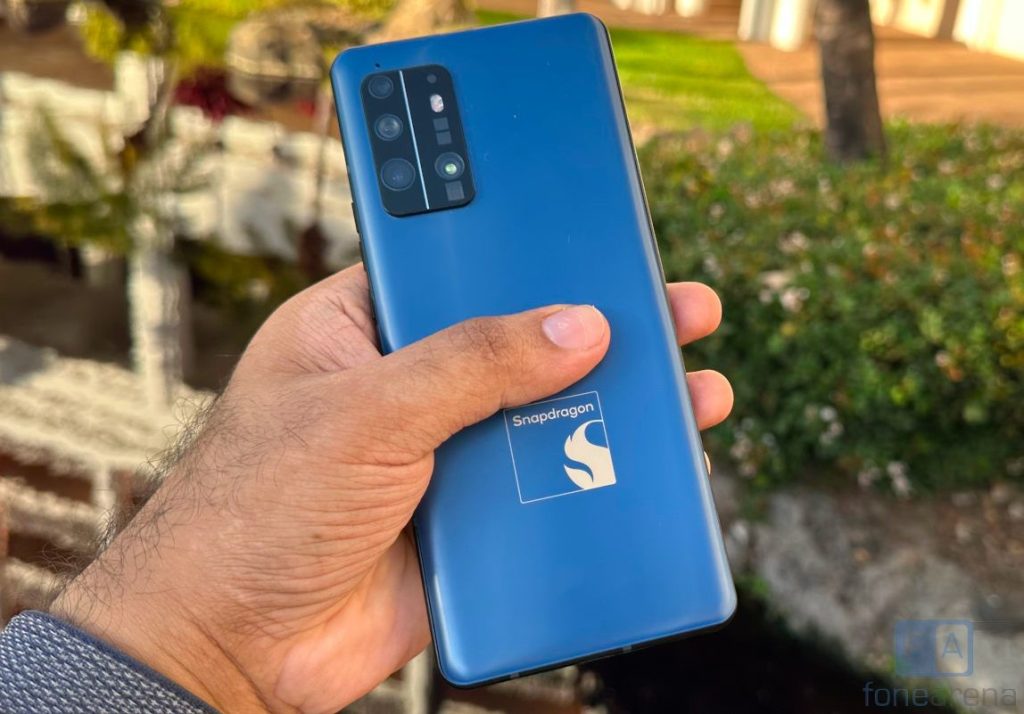
Here are the values from other benchmarks shared to Qualcomm
- GFXBench Mantattan 3.0 Offscreen (1080p) – 329 to 332 fps
- GFXBench T-Rex Offscreen (1080p) – 481 – 484 fps
- GFXBench Mantattan 3.1 Offscreen (1080p) – 224 – 226 fps
- GFXBench Car Chase Offscreen ES3.1 (1080p) – 129 to 130 fps
- GFXBench Aztec Ruins Vulkan (Higher Tier) Offscreen ES3.1 (1440p) – 65 fps
- GFXBench Aztec Ruins OpenGL (Higher Tier) Offscreen ES3.1 (1440p) – 60 fps
- GFXBench Aztec Ruins Vulkan (Normal Tier) Offscreen (1080p) – 178 to 179 fps
- 3Dmark WildLife Unlimited – 82 fps
- 3Dmark WildLife Extreme Unlimited – 12 fps
- ETH AIB Benchmark – 2070K to 2100K
- AIMark 2.6– 157K to 159K
- AITuTu 2.1.6– 3550000
These values are considerable better than the Snapdragon 8 Gen 1 and also beats the Apple 16 Bionic in GPU benchmarks, and Xiaomi teases that the Xiaomi 13’s GPU is 42% better than the Apple A16 SoC when you consider GFXBench Aztec Ruins Vulkan (Normal Tier) Offscreen (1080p) benchmark.

Qualcomm already confirmed that devices based on Snapdragon 8 Gen 2 will start rolling out soon. The Xiaomi 13 series which will be introduced this December should be the first phone to be official powered by the latest flagship Snapdragon 8 series chip, even though vivo has already introduced the X90 Pro+ last week.
The moto X40 series, iQOO 11 series, next Find X series (Find X6), nubia REDMAGIC 8 Pro, ZTE, ASUS Zenfone, ROG Phones and more will be powered by the flagship Snapdragon chip in the coming months.